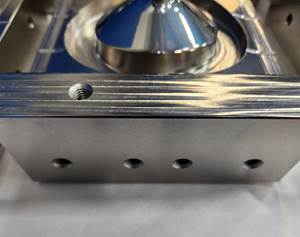Working Around Electric Power
Question: I Recently, I have taken on health and safety responsibilities for our metal finishing facility and it is new to me.
Question:
I Recently, I have taken on health and safety responsibilities for our metal finishing facility and it is new to me. As I was evaluating the hazards of our operation as part of our personal protection equipment assessment, our maintenance supervisor asked me about OSHA requirements for working around electrical power. I looked into the regs but found nothing specific, but I understand that hazards exist when working around electric power. Can you help? S.B.
Answer:
ou have raised an excellent question about an issue that “falls between the cracks” at most facilities. OSHA requires employees to keep workers safe, but its regulations do not always specify exactly how to comply.
When it comes to electrical safety and personal protective equipment (PPE), OSHA considers the National Fire Protection Association’s (NFPA) Standard 70E, Electrical Safety Requirements for Employee Workplaces, as the “recognized industry practice” that must be followed. As such, OSHA may cite an employer for failure to comply with NFPA 70E under its “general duty clause.”
In addition to electric shock and electrocution hazards that the NFPA 70E standard has covered in the past, the 2000 revision addresses what some describe as “the other electrical hazard”—electric arc flash. While by themselves electric arc flashes can cause serious burns (electric arc temperatures can reach into the 1,000s of degrees F, melting metal), the most serious burns are usually caused by the ignition of clothing. Synthetic fibers such as acetate, nylon, polyesters, rayon and so on will melt onto the skin as they burn, amplifying skin burn injury. While natural fibers such as cotton do not melt, they can continue to burn long after the arc flash has been extinguished.
A few NFPA 70E highlights regarding PPE include:
- PPE includes proper dress, eye/face protection, hand tools and diagnostic equipment
- PPE is rated based upon the voltage with which it is intended to be used
- PPE for protection against electric hazards must be replaced or recertified by the manufacturer every three years
- metal buttons, rivets, zippers, jewelry, or watches are not permitted on electrical jobs
- clothing with synthetic fibers is pro hibited unless the fabric has been treated to withstand the condition that may be encountered. NFPA 70E does state that 100% cotton clothing is acceptable, but recognized that there is still a fire hazard. Some facilities address this issue by using a uniform service for plant electricians and specifying the proper fire-retardant or resistant fabrics.
To determine the appropriate PPE for your facility, refer to NFPA 70E, Part II (Safety-related work practices), Table 3-3.9.1 (hazard risk category classifications) and 3-3.9.2 (protective clothing and personal protective equipment matrix). If the PPE cannot be determined from these two tables, a flash hazard analysis is required in accordance with 2-1.3.3. This may require you to hire an expert in this field to assist you. You can order a copy of the NFPA 70E standard by calling 800-344-3555 or visit www.nfpa.org.
This standard is expected to be revised this spring; additional documentation for job briefing and an energized electrical work permit are expected to be part of the revised standard.
S.B., you are to be commended for taking the safety of your maintenance workers seriously. Hope this has given you the guidance you need.
Related Content
Top Shop Builds Original Systems for Coating Medical Devices
Engineers at Surgical Coatings in Colorado have been ingeniously developing their own equipment, automation, processes and software since this powder coater’s inception in 1995.
Read MoreEngineered Coatings Offer Improvement for Medical Device Manufacturers
Diamond electroless nickel coating provides better lubricity and improved wear resistance for molds, resulting in better quality and productivity.
Read MoreFinishing High Reliability, Function Critical Parts
From safety critical automotive and aerospace components to lifesaving medical micro-components and implantable devices, Indiana-based Electro-Spec finishes applications that require zero failure rates.
Read MorePrecision Coating Receives ISO 14001 Certification
The company says its commitment to the environment and its health led it to seek this certification.
Read MoreRead Next
Episode 45: An Interview with Chandler Mancuso, MacDermid Envio Solutions
Chandler Mancuso, technical director with MacDermid Envio discusses updating your wastewater treatment system and implementing materials recycling solutions to increase efficiencies, control costs and reduce environmental impact.
Read MoreA ‘Clean’ Agenda Offers Unique Presentations in Chicago
The 2024 Parts Cleaning Conference, co-located with the International Manufacturing Technology Show, includes presentations by several speakers who are new to the conference and topics that have not been covered in past editions of this event.
Read MoreDelivering Increased Benefits to Greenhouse Films
Baystar's Borstar technology is helping customers deliver better, more reliable production methods to greenhouse agriculture.
Read More

























